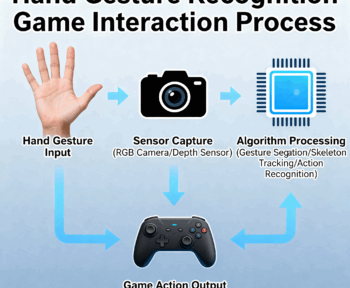Cross-platform gaming has evolved from a technical impossibility to an expected feature, fundamentally reshaping how players interact across different hardware ecosystems. The ability to play Fortnite, Minecraft, or Call of Duty with friends regardless of whether they’re on PlayStation, Xbox, PC, or mobile has created unified gaming communities that transcend traditional platform boundaries2.
Technical Architecture of Cross-Platform Gaming
The engineering challenges of enabling seamless cross-platform play are immense and multifaceted. Different platforms operate on distinct architectures—x86 for PC and modern consoles, ARM for mobile devices—requiring sophisticated abstraction layers to ensure consistent gameplay physics and logic. Network protocols must account for varying latency profiles, with mobile devices on cellular networks competing against PCs on fiber connections.
Modern cross-platform games employ deterministic simulation to ensure all players experience identical game states regardless of platform. This approach requires frame-perfect synchronization of physics calculations, random number generation, and input processing. Even minor discrepancies in floating-point calculations between platforms can cause desynchronization, making cross-platform development exponentially more complex than single-platform games.
The middleware solutions enabling cross-platform play have become increasingly sophisticated. Services like Epic Online Services, PlayStation Network, Xbox Live, and Steam provide unified backend infrastructure for matchmaking, voice chat, and player progression. These services abstract away platform-specific implementation details, allowing developers to focus on gameplay rather than infrastructure.
Input Parity and Competitive Balance
The most contentious aspect of cross-platform gaming involves balancing different input methods. PC players with keyboard and mouse enjoy superior precision in shooters, while console players benefit from aim assist to compensate for controller limitations. Mobile players face the greatest challenge, with touch controls offering neither the precision of mouse nor the tactile feedback of controllers.
Games have adopted various approaches to address input disparity. Fortnite implements platform-specific matchmaking pools while allowing players to opt into mixed lobbies2. Call of Duty uses input-based matchmaking, grouping players by control scheme rather than platform. Some games like Rocket League have found that certain genres naturally minimize input advantages, creating inherently fair cross-platform competition.
Advanced accessibility features have emerged from cross-platform development. Customizable control schemes, button remapping, and sensitivity adjustments ensure players can optimize their experience regardless of platform. Gyroscopic aiming on supported controllers bridges the gap between stick and mouse precision. These innovations benefit all players, not just those engaging in cross-platform play.
Graphics and Performance Scaling
Visual fidelity varies dramatically across platforms, from mobile devices rendering at 720p/30fps to high-end PCs achieving 4K/144fps. Cross-platform games must implement sophisticated scaling systems that maintain visual coherence while respecting hardware limitations. This requires careful consideration of which visual elements affect gameplay versus pure aesthetics.
Dynamic resolution scaling has become standard in cross-platform titles. Games automatically adjust rendering resolution to maintain target framerates, prioritizing smooth gameplay over pixel count. On mobile devices, this might mean dropping to sub-native resolutions during intense action, while PCs can supersample for enhanced image quality when performance allows.
The implementation of graphics settings creates interesting disparities. PC players can disable shadows or reduce foliage density for competitive advantages, while console players are locked to developer-defined settings. This has led to debates about competitive integrity, with some arguing that customizable settings create unfair advantages in cross-platform competition.
Platform-Specific Features and Limitations
Each platform brings unique capabilities and constraints to cross-platform gaming. PlayStation 5’s advanced SSD enables near-instant loading and seamless world streaming, features that must be carefully handled when playing with last-generation consoles or mobile devices2. Xbox’s Smart Delivery ensures players always have optimal versions for their hardware, complicating version management in cross-platform scenarios.
Mobile platforms introduce additional complexity through varying screen sizes, aspect ratios, and touch interfaces. Games must dynamically adjust UI elements, with HUD scaling and repositioning based on device characteristics. Safe zones ensure critical information remains visible across all screen types, from ultrawide monitors to phone displays with notches and curved edges.
Platform holders’ policies significantly impact cross-platform implementation. Sony’s historical reluctance to enable crossplay has gradually shifted to acceptance, though restrictions remain. Apple’s App Store policies affect how games handle payments and user-generated content. These policy considerations often dictate feature availability across platforms, creating fragmented experiences despite technical capability.
Social Systems and Communication
Cross-platform social features require careful navigation of platform-specific restrictions and parental controls. Voice chat must comply with different regional regulations and age restrictions across platforms. Text chat faces challenges from varying input methods, with mobile players struggling to communicate quickly compared to keyboard users.
Friends lists and party systems have evolved to transcend platform boundaries. Games increasingly implement their own social graphs independent of platform-specific friends lists. Epic Games pioneered this approach with Fortnite, creating a unified social system accessible from any platform2. This platform-agnostic approach has become the template for modern cross-platform games.
Toxicity management becomes more complex in cross-platform environments. Different platforms have varying community standards and reporting mechanisms. Games must implement unified moderation systems that respect platform policies while maintaining consistent enforcement across all players.
Progression and Monetization Across Platforms
Cross-platform progression has become an expected feature, with players demanding seamless continuation of their gaming experience across devices. Cloud saves synchronize progress, unlocks, and purchases across platforms, though technical and business challenges remain. Platform holders taking revenue shares from in-game purchases complicate cross-platform monetization.
The battle pass model has proven particularly effective for cross-platform games. Players purchase seasonal content once and access it from any platform, creating value that encourages multi-platform engagement. This model sidesteps complex revenue-sharing arrangements while providing predictable monetization across all platforms.
Virtual currency systems require careful implementation to comply with different platform policies. Some platforms restrict currency purchased elsewhere, forcing developers to implement platform-specific currency pools. This fragmentation creates user experience challenges and potential confusion about currency availability across platforms.
Mobile Integration Challenges
Integrating mobile platforms into cross-platform ecosystems presents unique challenges beyond technical considerations. Battery life constraints require aggressive optimization to prevent rapid drainage during extended multiplayer sessions. Thermal throttling can cause performance degradation mid-match, creating competitive disadvantages for mobile players.
Network stability on mobile devices varies dramatically based on connection type and location. Games must implement sophisticated lag compensation and prediction systems to maintain playable experiences across varying network conditions. Some games restrict mobile players to Wi-Fi connections for competitive modes, acknowledging cellular networks’ inherent instability.
The touch control paradigm requires fundamental rethinking of game design. Successful cross-platform games often simplify controls or provide extensive customization options for mobile players. Auto-aim, automatic actions, and simplified input schemes help level the playing field, though these accommodations sometimes frustrate players on other platforms who view them as unfair advantages.
Success Stories and Lessons Learned
Minecraft stands as the gold standard for cross-platform gaming, with its Bedrock Edition enabling seamless play across virtually every gaming platform2. Its success stems from gameplay that doesn’t favor any particular input method and technical architecture designed for cross-platform compatibility from the ground up.
Genshin Impact demonstrates successful free-to-play cross-platform implementation, with shared progression and purchases across mobile, PC, and PlayStation. Its gacha monetization model works identically across platforms, avoiding the complications of traditional game sales and platform-specific content2.
Apex Legends showcases how competitive shooters can implement fair cross-platform play through careful balance tuning and optional crossplay. Players can choose their level of cross-platform engagement, from platform-specific lobbies to full cross-platform ranked competition.
The Future of Unified Gaming
Cloud gaming promises to further blur platform distinctions. Services like Xbox Cloud Gaming enable console experiences on mobile devices, eliminating hardware limitations through streaming. As 5G networks proliferate and latency decreases, the concept of platforms may become obsolete, with games existing in the cloud and accessible from any screen.
Artificial intelligence will play an increasing role in balancing cross-platform competition. Machine learning algorithms could dynamically adjust aim assist, movement speed, and other parameters to ensure fair competition regardless of input method or platform. This algorithmic balancing could finally solve the input parity problem that has plagued cross-platform gaming.
The metaverse concept extends cross-platform gaming beyond traditional games. Persistent virtual worlds accessible from any device represent the logical evolution of cross-platform play. These spaces would seamlessly scale from mobile AR experiences to full VR immersion, with players interacting regardless of their chosen interface.





